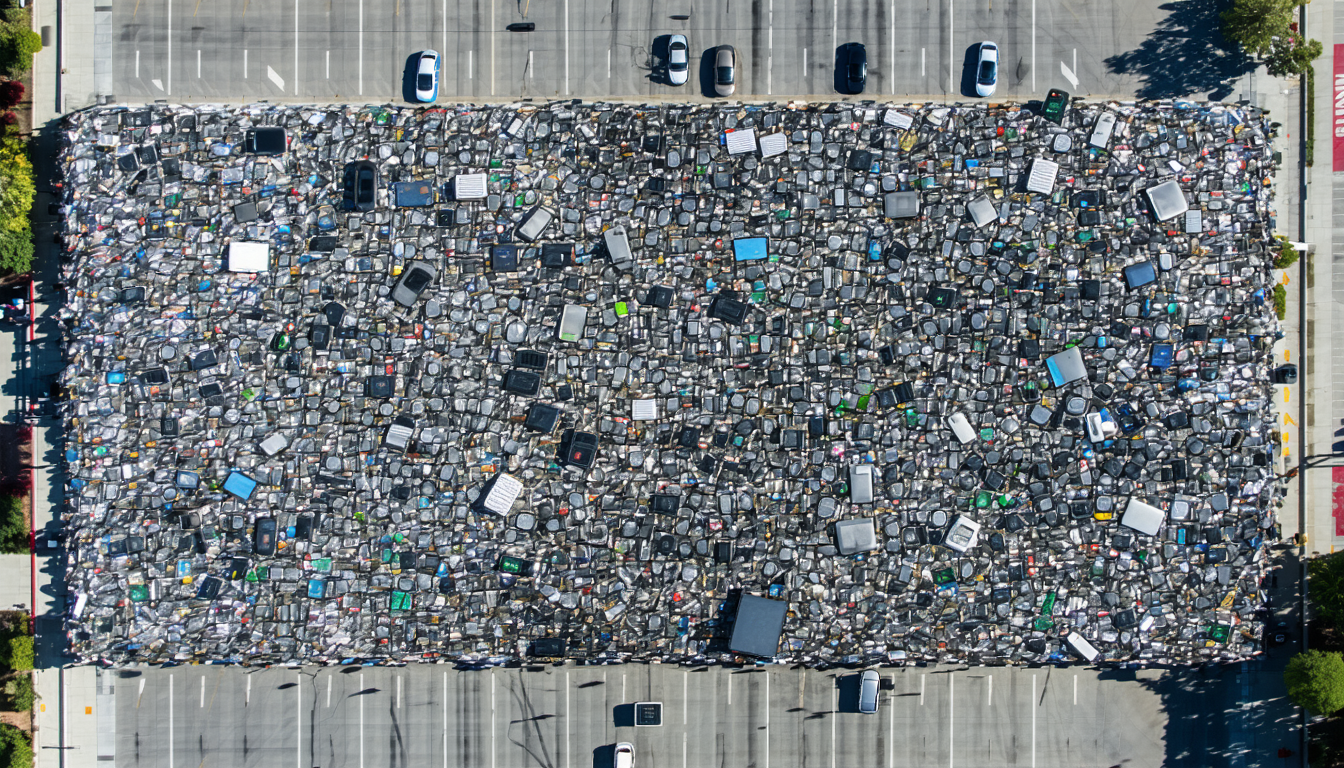In West Covina, California, the mounting issue of electronic waste, or e-waste, has emerged as a critical environmental and public health challenge. As technology advances at a rapid pace, discarded devices like smartphones, laptops, and appliances pile up, creating a pressing need for sustainable solutions. This article delves into the current state of e-waste in West Covina, explores local initiatives to tackle the problem, and examines the broader implications for residents and policymakers in the United States. With actionable insights and expert opinions, we uncover what’s at stake and what lies ahead.
The Scale of E-Waste in West Covina
West Covina, a city of over 100,000 residents in Los Angeles County, mirrors a national trend of escalating e-waste. According to the Environmental Protection Agency (EPA), the U.S. generated approximately 6.9 million tons of e-waste in 2019, with only 15% being recycled. Locally, West Covina faces similar challenges, as outdated electronics often end up in landfills, releasing toxic substances like lead and mercury into the soil and water.
City officials estimate that thousands of pounds of e-waste are discarded improperly each year in the area. This not only strains local waste management systems but also poses risks to community health. The urgency to address this issue has never been clearer as improper disposal continues to grow alongside tech consumption.
Local Efforts to Combat E-Waste in West Covina
Recognizing the severity of the problem, West Covina has initiated several programs to curb e-waste accumulation. The city partners with organizations like the Los Angeles County Sanitation Districts to host regular e-waste collection events. In 2023 alone, these events have diverted over 50 tons of electronics from landfills, providing residents with accessible drop-off points for safe disposal.
Additionally, local businesses are stepping up by offering recycling incentives. For instance, some retailers provide discounts for trading in old devices, encouraging responsible behavior among consumers. These efforts mark a positive step, though experts argue that more comprehensive policies are needed to address the root causes of e-waste generation.
Impact on Residents and the Environment
The consequences of unchecked e-waste in West Covina extend beyond cluttered landfills. Toxic materials from discarded electronics can contaminate groundwater, affecting drinking water quality for local families. Health risks, including respiratory issues and neurological damage from exposure to hazardous chemicals, are a growing concern for vulnerable populations like children and the elderly.
Economically, improper e-waste management burdens municipal budgets with cleanup and disposal costs. For residents, this could translate into higher taxes or reduced funding for other public services. The ripple effects underscore the need for collective action among individuals, businesses, and government bodies to mitigate these challenges.
Expert Insights on Sustainable Solutions
Industry leaders emphasize that education and innovation are key to addressing the e-waste crisis. According to Dr. Emily Carter, an environmental scientist at UCLA, “Communities like West Covina must prioritize awareness campaigns to teach residents about proper recycling methods. Without public buy-in, even the best programs will fall short.” She also advocates for extended producer responsibility laws, which would hold manufacturers accountable for the lifecycle of their products.
On a national level, experts point to successful models in states like California, where stringent e-waste regulations have boosted recycling rates. Adopting similar frameworks locally could position West Covina as a leader in sustainable waste management within the region.
Future Outlook for E-Waste Management
Looking ahead, the trajectory of e-waste in West Covina hinges on policy innovation and community engagement. Potential developments include stricter disposal regulations and partnerships with tech companies to design products with recyclability in mind. If scaled effectively, these measures could reduce e-waste volumes significantly by 2030, aligning with broader U.S. environmental goals.
However, challenges remain, including funding constraints and varying levels of public awareness. Balancing economic growth with environmental stewardship will require nuanced strategies that cater to West Covina’s unique demographic and industrial landscape. Both sides—policymakers pushing for regulation and residents advocating for convenience—must find common ground for lasting impact.
In conclusion, the e-waste crisis in West Covina reflects a larger national struggle to manage technological progress responsibly. Through local initiatives, expert guidance, and a commitment to sustainability, there is hope for meaningful change. As 2023 unfolds, all eyes are on West Covina to set an example for other U.S. cities grappling with this modern dilemma.
Frequently Asked Questions (FAQ)
-
What is e-waste, and why is it a problem in West Covina?
E-waste refers to discarded electronic devices like phones and computers. In West Covina, it poses environmental and health risks due to toxic materials leaching into soil and water when improperly disposed of in landfills. -
Where can I recycle e-waste in West Covina?
Residents can participate in city-organized collection events or visit designated drop-off points coordinated by the Los Angeles County Sanitation Districts. Check the city’s website for upcoming dates and locations. -
How can I help reduce e-waste locally?
Opt for repairing devices instead of replacing them, donate usable electronics, and use certified recycling programs. Small actions can collectively make a big difference in managing e-waste in West Covina. -
Are there penalties for improper e-waste disposal?
Yes, California state laws impose fines for illegal dumping of electronics. West Covina enforces these regulations to encourage proper recycling practices among residents and businesses.



